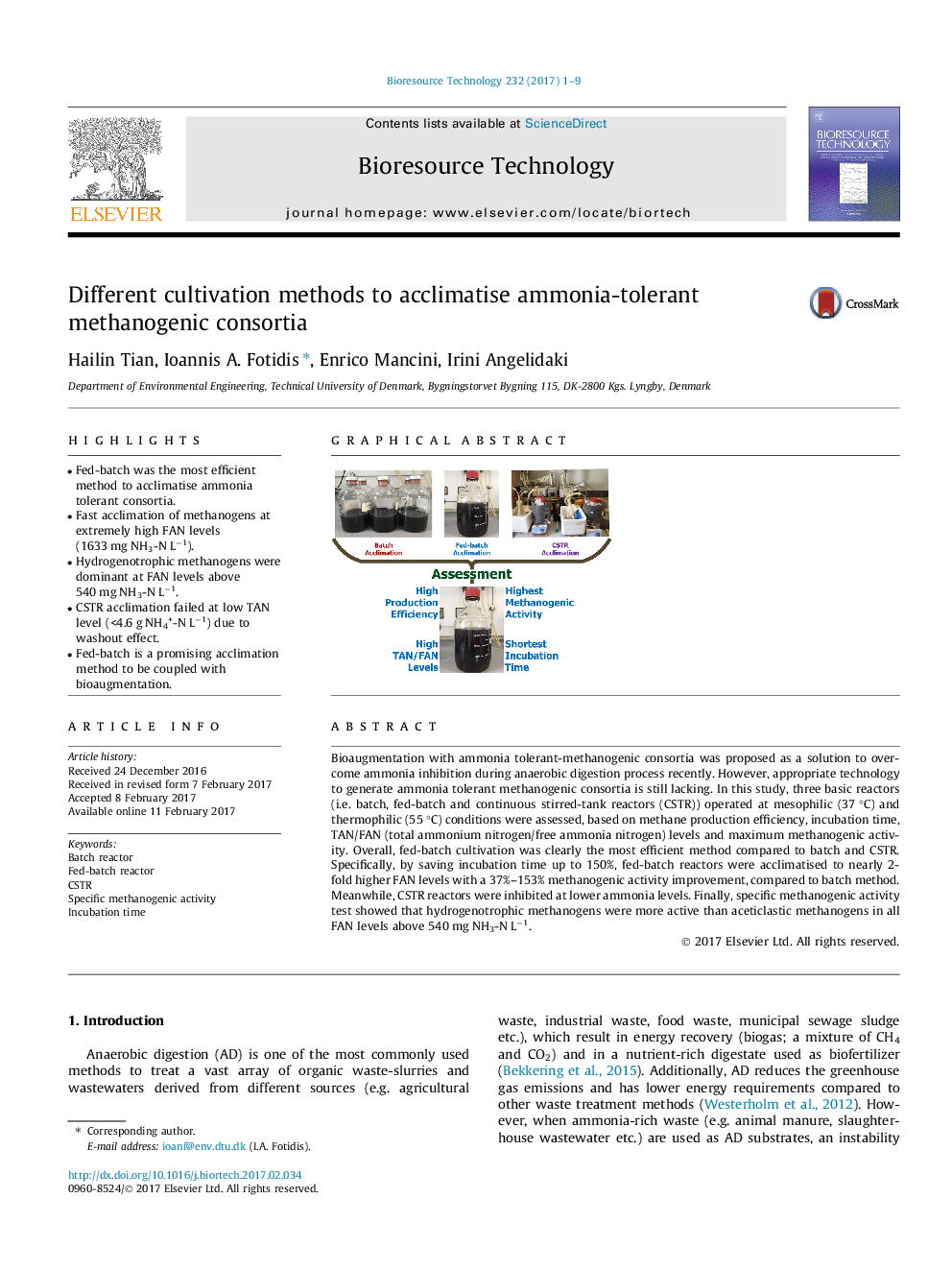| Article ID | Journal | Published Year | Pages | File Type |
|---|---|---|---|---|
| 4997544 | Bioresource Technology | 2017 | 9 Pages |
â¢Fed-batch was the most efficient method to acclimatise ammonia tolerant consortia.â¢Fast acclimation of methanogens at extremely high FAN levels (1633 mg NH3-N Lâ1).â¢Hydrogenotrophic methanogens were dominant at FAN levels above 540 mg NH3-N Lâ1.â¢CSTR acclimation failed at low TAN level (<4.6 g NH4+-N Lâ1) due to washout effect.â¢Fed-batch is a promising acclimation method to be coupled with bioaugmentation.
Bioaugmentation with ammonia tolerant-methanogenic consortia was proposed as a solution to overcome ammonia inhibition during anaerobic digestion process recently. However, appropriate technology to generate ammonia tolerant methanogenic consortia is still lacking. In this study, three basic reactors (i.e. batch, fed-batch and continuous stirred-tank reactors (CSTR)) operated at mesophilic (37 °C) and thermophilic (55 °C) conditions were assessed, based on methane production efficiency, incubation time, TAN/FAN (total ammonium nitrogen/free ammonia nitrogen) levels and maximum methanogenic activity. Overall, fed-batch cultivation was clearly the most efficient method compared to batch and CSTR. Specifically, by saving incubation time up to 150%, fed-batch reactors were acclimatised to nearly 2-fold higher FAN levels with a 37%-153% methanogenic activity improvement, compared to batch method. Meanwhile, CSTR reactors were inhibited at lower ammonia levels. Finally, specific methanogenic activity test showed that hydrogenotrophic methanogens were more active than aceticlastic methanogens in all FAN levels above 540 mg NH3-N Lâ1.
Graphical abstractDownload high-res image (186KB)Download full-size image
